Since the 1990s, the artist Rick Lowe has engaged in a practice driven by “social sculpture,”—a term coined by the artist Joseph Beuys, dealing with creative endeavors meant to enrich the societal structure in which they exist. In Lowe’s practice, the concept takes the form of community-based and group projects dealing with ideas like urban development and planning and social issues within this realm, particularly regarding low-income and marginalized communities.
For his “Project Row Houses” (1993—2018) the artist worked with a group in Houston, Texas to transform his home city’s Third Ward shotgun houses into a thriving cultural destination activated by artists. His social sculpture practice has also included initiatives throughout like “Victoria Square Project,” an ongoing project in Athens, Greece, surrounding immigrants and those seeking refuge in the city; “Greenwood Art Project,” addressing the horrific Tulsa Massacre; and initiatives invoked by major events like The Great Migration and Hurricane Katrina.
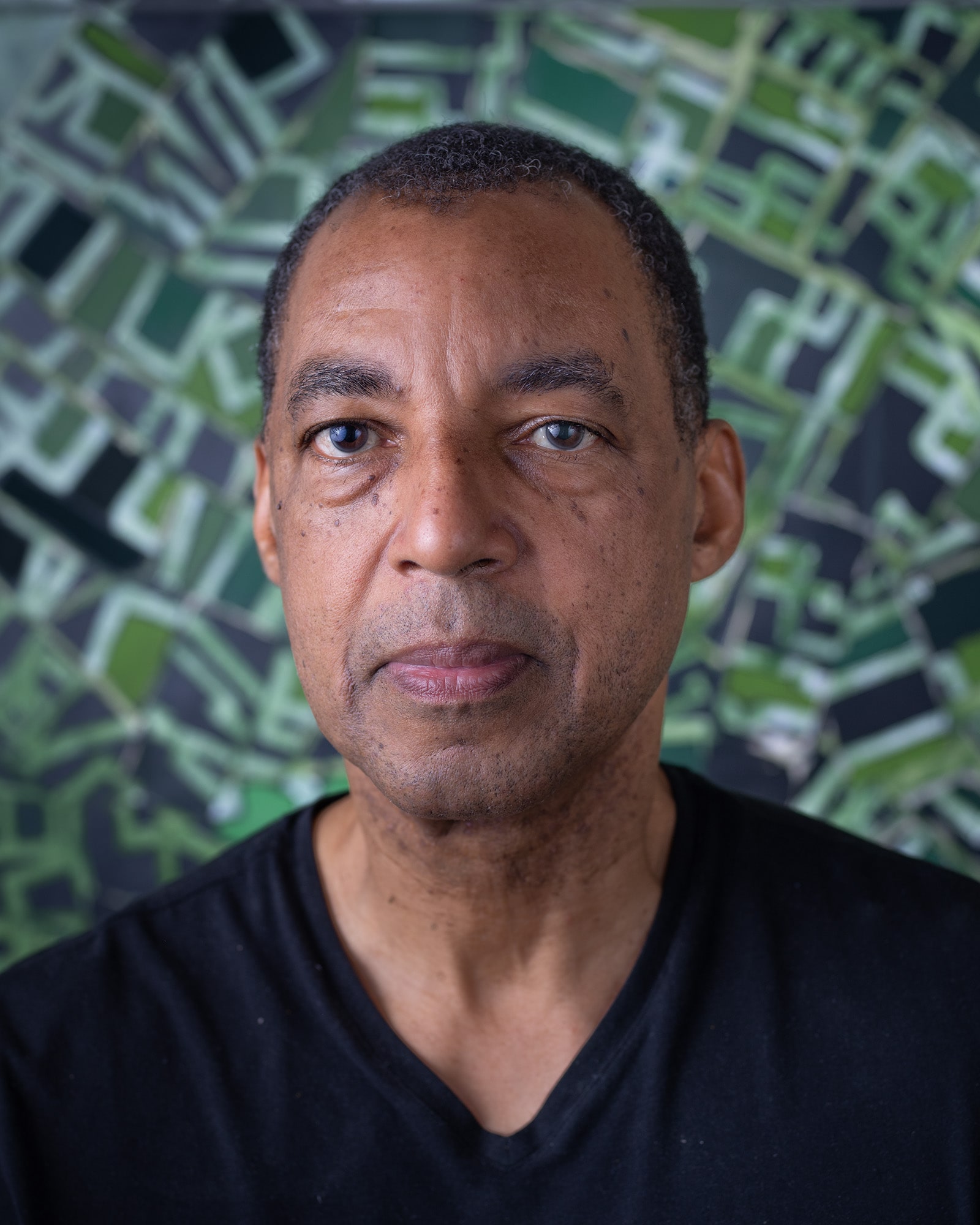 Portrait of Rick Lowe by Brent Reany, courtesy of the artist and Gagosian.
Portrait of Rick Lowe by Brent Reany, courtesy of the artist and Gagosian.
Lowe is drawn to the cultural threads that connect us as humans. This comes about in his canvas-based compositions that appear almost like collaged maps or abstracted fields of characters. While not apparent at first glance, they are, in fact, an evolution of a cultural pastime shared by many in Lowe’s community in Houston—dominos. It is these works that are the basis of Lowe’s solo exhibition “Meditations on Social Sculpture,” open at Gagosian’s West 21st Street gallery in New York from September 8—October 22.
Ahead of the opening, Whitewall had the pleasure of speaking with Lowe about the show and the relationship between his solo and community-engaged works.
WHITEWALL: What was the starting point for “Meditations on Social Sculpture”?
RICK LOWE: My practice prior to the work that I’m doing now is “social sculpture.” That’s how I was mainly known—as the person who started “Project Row Houses” here in Houston and a number of other projects in different places. After over 25 years, I was kind of feeling this need to be able to be reflective about this community-engaged work, this social sculpture work, and so painting was a way for me to step back, step out of the community, into the studio, and to try to wrestle with these ideas and ways that are much more symbolic. And from a more aesthetic perspective, just kind of playing with form and thinking about how these forms relate to the things I’ve learned within my social sculptural work.
WW: “Project Row Houses” began in the early 1990s. What were some of the evolutions you saw over the course of that project, versus how that came through in these visual projects?
RL: One that will be in the exhibition is a work titled Project Row Houses: Biggers and Beuys and that was my reflection on the inspiration and the framework on which I was able to develop “Project Row Houses,” which was connected to these iconic artists, for me. One was John Biggers, who did a lot of paintings about shotgun houses in the south. His work was the work that gave me the foresight to look at these little .22 shotgun houses, to think about doing the social sculpture projects. Then, of course, Joseph Beuys was the artist that actually coined the term “social sculpture.”
There’s one piece where I weave in these collage-kind of images that is the book cover of the Joseph Beuys book that I read early on and an image of a John Biggers painting of shotgun houses. I kind of collaged them in and made this piece about the movement of suburban development, social development and the way my work is about the movement of these domino chips. That movement represents either kind of an urban environment or even a sociological movement.
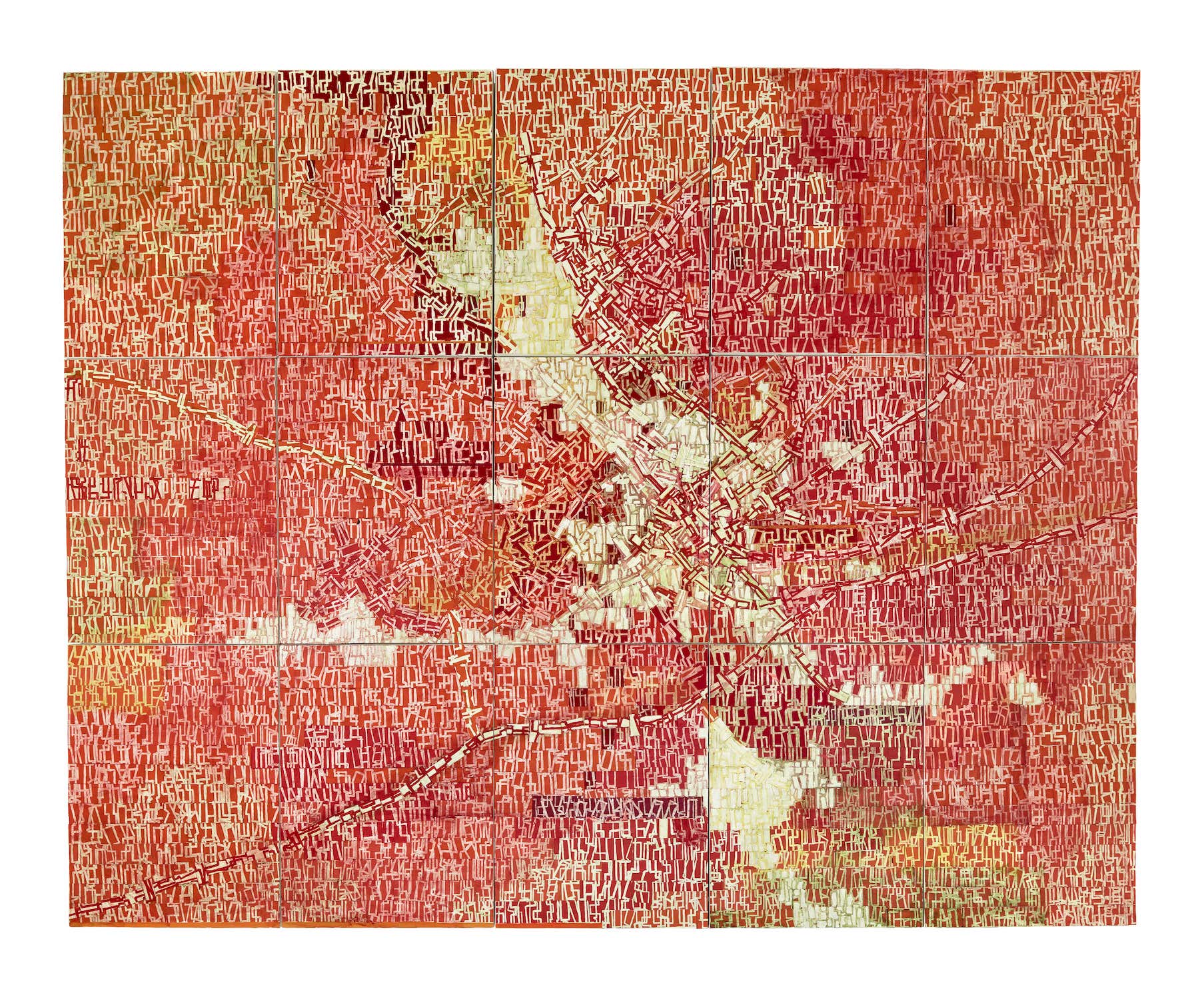 Rick Lowe, “Untitled #060822,” 2022, acrylic and paper collage on canvas, 144 x 180 inches; © Rick Lowe Studio, photo by Thomas Dubrock, courtesy of the artist and Gagosian.
Rick Lowe, “Untitled #060822,” 2022, acrylic and paper collage on canvas, 144 x 180 inches; © Rick Lowe Studio, photo by Thomas Dubrock, courtesy of the artist and Gagosian.
WW: You mentioned the dominos, which are a building block of your paintings. Can you tell us about those?
RL: Dominos is a building block of all the paintings, basically. It came about very organically, that this work evolved in the way that it did. Part of my practice of doing community-engaged work is to engage in the kinds of activities that people do on an ordinary basis. One of the things in the community here in Houston, I’ve found [is] that people play dominos. So, I started playing dominos a lot.
And as I played, I was equally fascinated with the patterns of the domino games as they play out. I initially started just photographing them. As games were played, I would use my iPhone and take overhead shots of them. Then, eventually, I had this challenge to make a drawing and I intuitively decided to make some tracings of these domino patterns that I see. The first drawing was just two games that I traced out on a piece of paper and then, after that it just kind of grew [into] multi-layered drawings… and it just evolved from there.
WW: Some of those works look a bit like city maps or neighborhoods. Is that purposeful or coincidental?
RL: It’s all very coincidental, actually. I didn’t plan them, but for some reason, it just started looking like maps. I found that fascinating because, doing the work I was doing with “Project Row Houses” and other communities, a lot of it is about looking at the lay of the land and looking at maps.
WW: You’ve said that the show offers “an opportunity to think about issues of equity and urban planning in a more conceptual way.” What are some of these issues in particular that you’re trying to highlight?
RL: There are issues of gentrification and oftentimes, within the works, for me, there’s kind of a play on this notion between urban and rural. There are things about the social movements of people through gentrification. It’s also about the densifying of space and all of those issues.
Those are things that I’m thinking about in my social sculpture work. There’s a practical aspect of addressing it in the community, but put them in the studio… I can just play around with it, I can have these thoughts and ideas, and they’re uncertain. There are no recognizable answers to anything.
WW: You’ve mentioned that you struggle with the idea of artists creating solutions. What is it that you’re offering instead?
RL: The whole thing that moved me toward social sculpture is this challenge about artists creating solutions, as opposed to being reflective and symbolic. That’s what my social sculpture work has been about, although over time, I’ve become a little bit more open in this idea that things aren’t as black and white as I once may have thought they were. Solutions are not as clear.
So, to me, it’s much more about the practice of doing the work and not necessarily having to carry the burden that the work is going to solve specific problems. I’ve been helped dealing with that by being in the studio, making work that is more meditative. It’s not about solving a problem, but it is a reminder and it’s a part of the practice that reminds us that we have to put in work. We have to put in work to make the change that we want—whether the work is always in the community or sometimes in the studio. It’s always about doing the work.
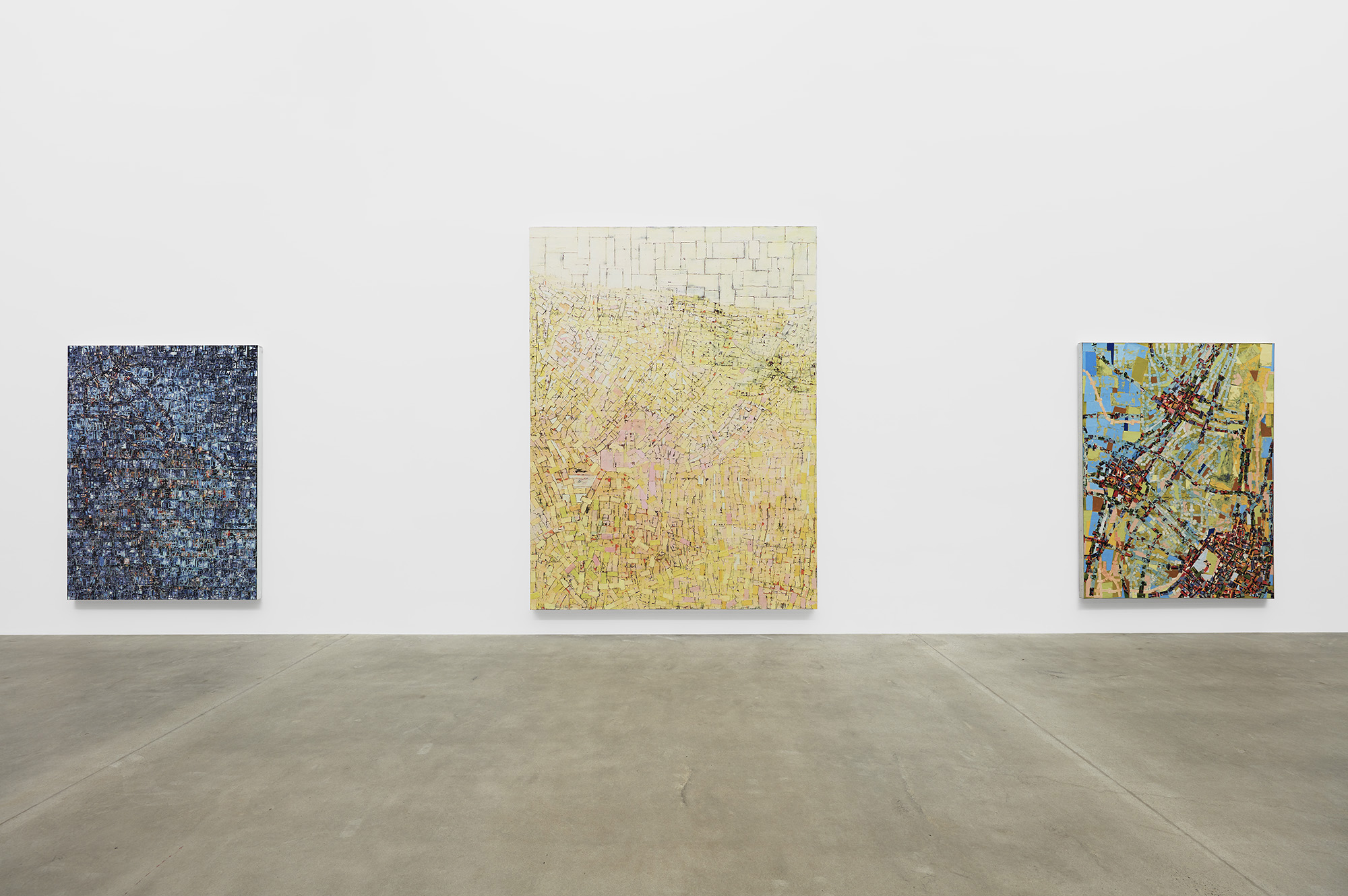 Rick Lowe, Installation view, “Meditations on Social Sculpture,” 2022,
Artwork © Rick Lowe Studio, photo by Tom Powell Imaging, courtesy of the artist and Gagosian.
Rick Lowe, Installation view, “Meditations on Social Sculpture,” 2022,
Artwork © Rick Lowe Studio, photo by Tom Powell Imaging, courtesy of the artist and Gagosian.
WW: Would you say that “doing the work” is the responsibility of the artist?
RL: Yes, that’s exactly it. It’s not about having an end result out there that you’re trying to get to. It’s about the commitment to doing the work in whatever way one feels that they can do it.
WW: Typically, you are working on group efforts and community projects in your social sculpture work, but these works we’re dealing with at Gagosian were made alone. Did you have a different approach to this exhibition than you might typically?
RL: Strangely enough, the practice is the same. It’s amazing. I attribute that to the fact that in general, we have a DNA that carries us through life and it is what it is. It doesn’t matter whether you’re working in this field or working in that field, it’s just in our psyche.
WW: Do you get anything different personally by doing solo work versus your more community-based work?
RL: Absolutely. One of the things I kind of forgot doing community-engaged work—because when you’re doing that work it’s full-on and there’s a limited amount of resources, so you find yourself never lifting your head up to reflect and to be able to kind of think broadly about things. That is also one of the challenges of low-income communities and households, in general—people don’t have the chance to reflect. You don’t have time. You’ve got to keep going.
Being able to allow myself this opportunity, it’s a privileged thing to be able to allow yourself to step out of the heavy load of the work, to be able to say, “Okay, now I’ve got to sit back and think about this.” It’s also something [with] a lot of people doing community-engaged [work] and activism, this whole notion of self-care is nothing, it didn’t register. Because the work has to happen. I think getting older and realizing, self-care is something that’s really real. And being in the studio is an opportunity for me to do that—to do self-care as I continue to think about the work.
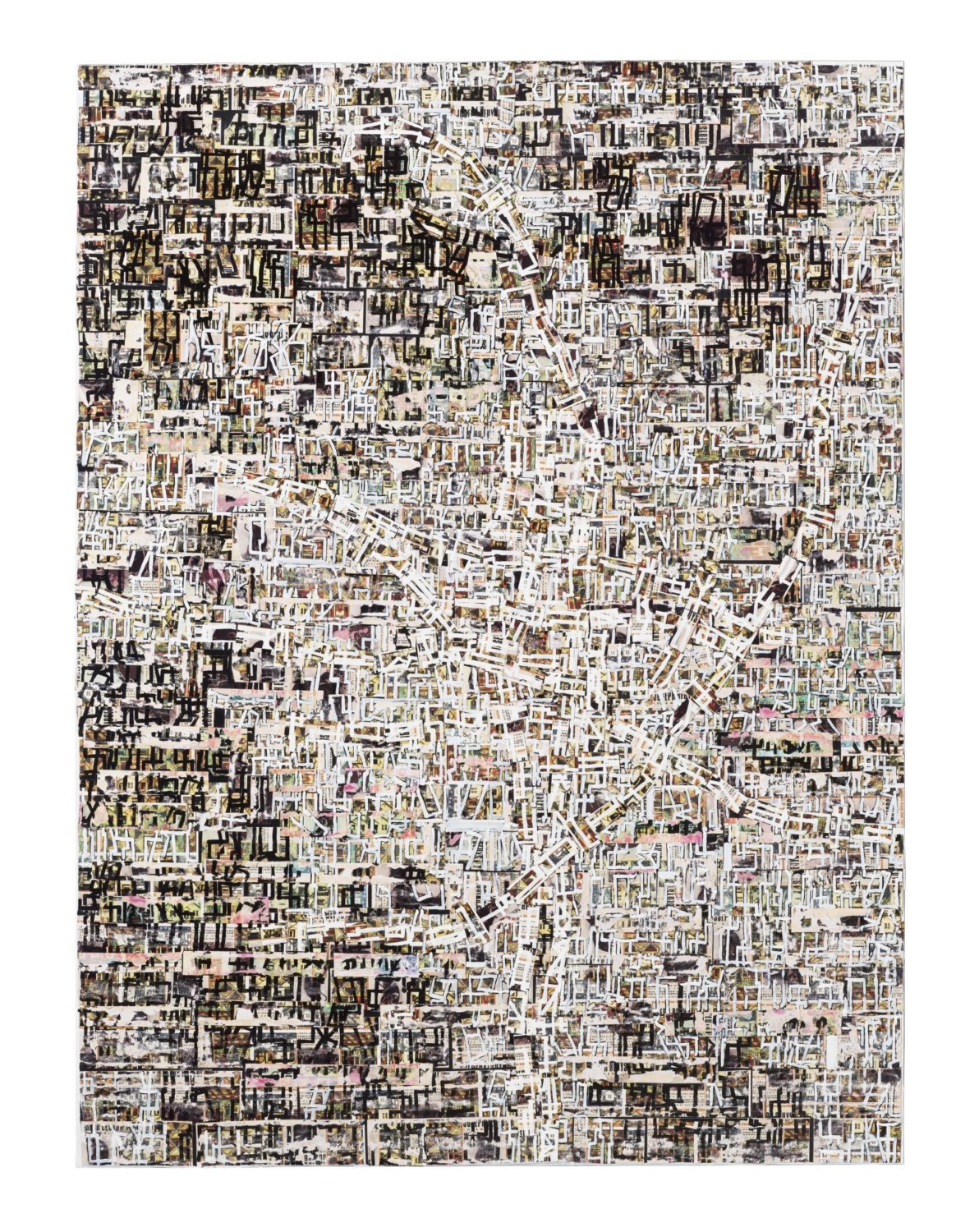 Rick Lowe, “Project Row Houses: Biggers and Beuys,” 2021, acrylic and paper collage on canvas, 96 x 72 inches; © Rick Lowe Studio, photo by Thomas Dubrock, courtesy of the artist and Gagosian.
Rick Lowe, “Project Row Houses: Biggers and Beuys,” 2021, acrylic and paper collage on canvas, 96 x 72 inches; © Rick Lowe Studio, photo by Thomas Dubrock, courtesy of the artist and Gagosian.
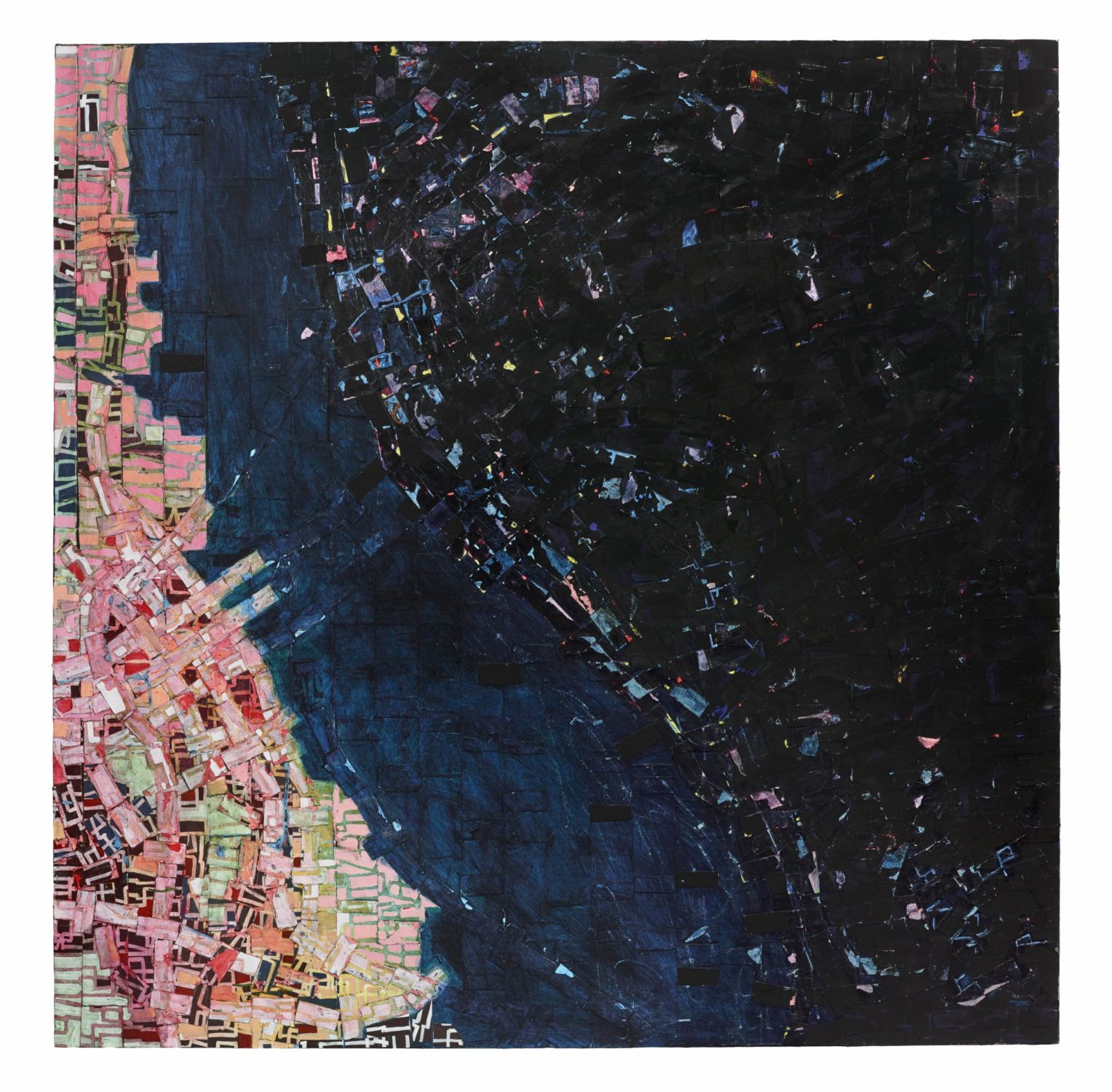 Rick Lowe, “Victoria Square Project: Open Borders,” 2022, acrylic and paper collage on canvas, 84 x 84 inches; © Rick Lowe Studio, photo by Thomas Dubrock, courtesy of the artist and Gagosian.
Rick Lowe, “Victoria Square Project: Open Borders,” 2022, acrylic and paper collage on canvas, 84 x 84 inches; © Rick Lowe Studio, photo by Thomas Dubrock, courtesy of the artist and Gagosian.











